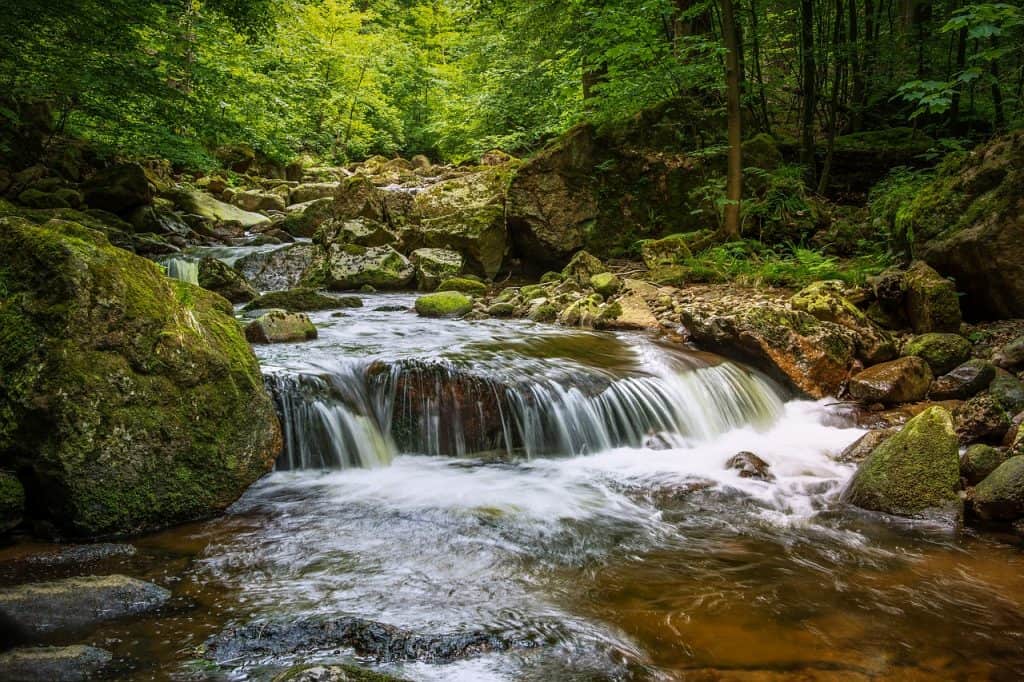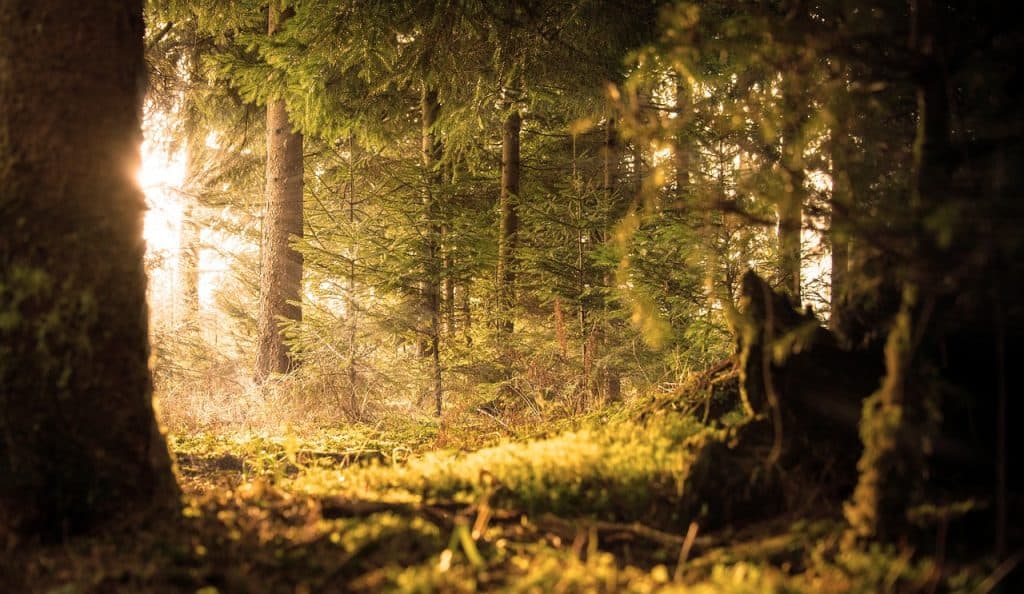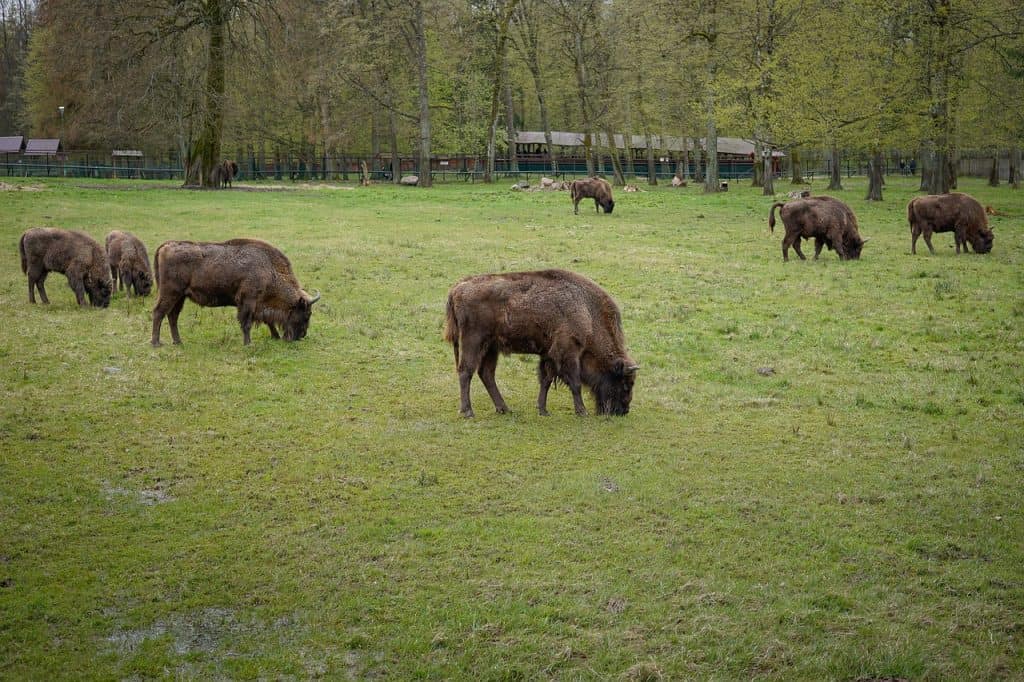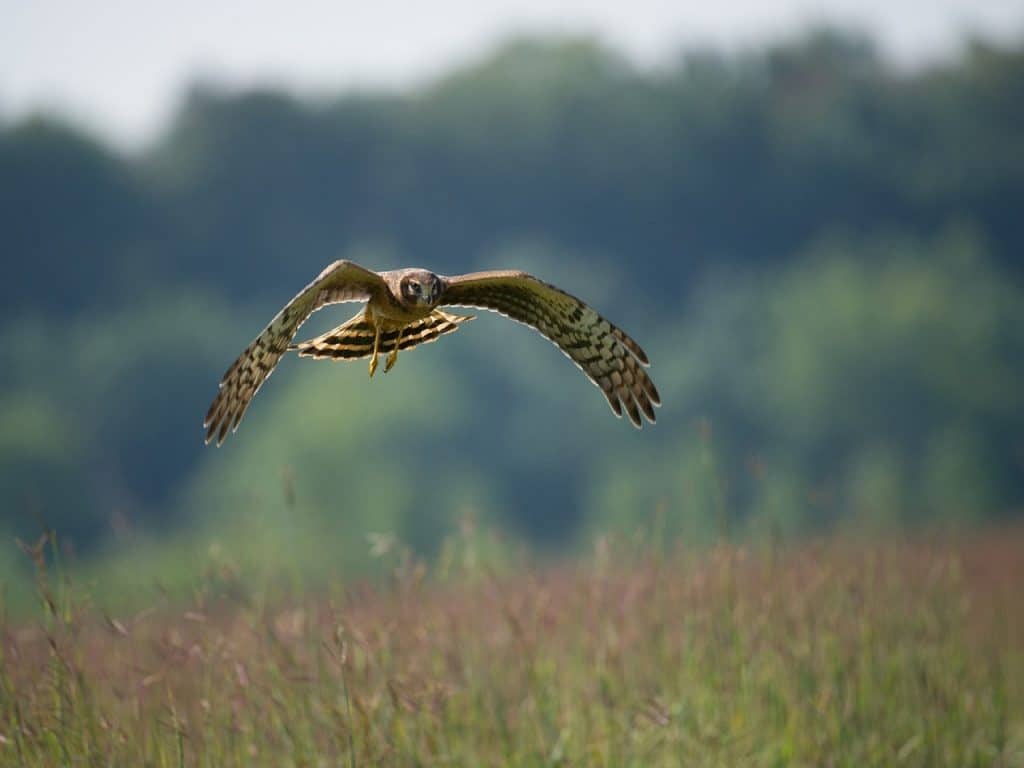About the Solska Forest Landscape Park
The purpose of protection is compact forest complexes of a forest nature, landscape of river valleys forming gorges in the edge zone of Roztocze and the Sandomierz Basin.
Administrative location (poviat / commune): Lubelskie voivodship / Biłgorajski poviat / Aleksandrów (rural), Józefów (urban-rural), Łukowa (rural), Obsza (rural); Tomaszowski / Susiec Poviat (rural); Podkarpackie voivodeship / Lubaczowski poviat / Narol (urban-rural), Cieszanów (urban-rural)
Most of the area of the Solska Forest Landscape Park lies on the flat, sandstone Biłgoraj Plain, covered with forests of the Solska Forest. Its monotonous flat landscape is diversified by numerous watercourse valleys, as well as dunes and boggy inter-dune basins. The most interesting in terms of landscape is the north-eastern part of the Park, covering the edge of Roztocze, rising several dozen meters above the Biłgoraj Plain.
The highest raised fragment of the edge, reaching 321 m a.s.l., is located near Narol, at the eastern border of the Park. The edge is deeply split in several places by valleys flowing from Roztocze rivers and streams forming systems of small waterfalls, called noise or szypotów. They arose due to the difference in resistance of Cretaceous and Tertiary rocks that build the ground. They constitute the greatest landscape attraction of the Park.
The entire area of the Solska Forest Landscape Park belongs to the Tanwia catchment, which is the Park’s main river. Tanew with its tributaries (Sopot, Jeleń, Szum, Niepryszka), crossing the edge zone, creates groundbreaking valleys. In the edge hills zone, streams cut deep into the ground and cut the cover up to the solid rock. Rock thresholds so-called “Szypoty.” The Jeleń River has the largest waterfall in Roztocze, with a calcareous threshold of 1.5 m. On the Tanwi section, between the mouth of the Łosiniecki Stream and the mouth of Jelenia, there are 24 thresholds on the short 400 m section. It is the most beautiful part of the Tanwia valley, unique in the country.
Waterfalls on the Sopot River near Hamernia have a slightly different character. The thresholds here are jagged and the river resembles a mountain stream even more. Both parts of the valleys have been protected.

Cultural heritage
The most important monuments in the Park include: a Neo-Baroque church from 1886, as well as a nineteenth-century synagogue and Jewish cemetery in Józefów. St. parish church complex John of Nepomuk from the 19th century in Suśc. The ruin of Zamość paper mills in the Czartowe Pole reserve. Wooden water mill from 1925 in Suśc.
Important points on the map of the Solska Primeval Forest Landscape Park include national memorial sites: a guerrilla cemetery from World War II in Osuchy, a cemetery and a place after the camp founded by the NKVD in Błudek, monuments in the Maziar and Krzywe Górka hills.
It is also worth mentioning the archaeological site “Castle” otherwise known as “Church”. It is an earth embankment of a former castle built in the forks of Tanwia and Jelenia. In the 17th century a church was built there, converted in 1748 into a church. During the January Uprising and during World War II, partisans were hiding here, which commemorates the cross and the monument.
In the Podkarpackie part of the park there is Narol – a town that once belonged to the mighty Łosiów family. On the initiative of Antoni Feliks, a magnificent residence was created, where a collection of unique works of art was collected. The palace was completely robbed during World War I. currently, the Pro Academia Narolense Foundation restores its splendor. It is also worth seeing the ruins of the church in Huta Różaniecka.
Flora
Forests, as the dominant element of the Park, constitute over 85% of its area. The prevailing type of forest are fresh pine forests.
The vegetation of the Solska Forest is varied and extremely interesting. The more interesting plants under protection include: bear’s garlic, Robert’s encouragement, five species of forkbeards, narrow-leaved bitterness, three species of sundew, common marsh, Siberian iris, lily goldfinch, several species of orchids, string and marsh sedge, yellow water lily and fragrant turtle.

Fauna
The fauna of this area is also rich. In the cold and clean waters of the streams of the Park live two valuable species of fish, also for anglers: brown trout and grayling. The upper sections of the stream course were assumed to be called “the land of trout and grayling”. Globally threatened species of avifauna in the Park include: bitterns and corncrake. The most characteristic and at the same time the most valuable forest species include the majority of claws: honey buzzard, white-tailed eagle, hawk, sparrowhawk, buzzard, lesser spotted eagle, hazel grouse, capercaillie, black grouse, crane, woodpeckers: green-gray, green, black. Noteworthy is the presence of a gadożera, which is regularly observed in the area of the Solska Forest. This is an extremely endangered species; in the Lublin region, its number is estimated at only 3-4 pairs.
The wetland species deserve attention, among others most species of grebes, bittern, spinning top, all breeding greeds. The mammal group includes: 4 species of shrews, 7 species of bats, hedgehog, mole, weasel, stoat, common squirrel, European hamster, edible dormouse, dormouse, acorn, European beaver, wolf, lynx, wild boar, elk, deer, roe deer. More and more frequent observations of the lynx show that it is rebuilding its population, thanks to which the natural deer population selector will be restored. Currently, Puszcza Solska is a bird refuge of international rank within the Natura 2000 program.
Tourism in the Solska Forest Landscape Park
The tourist base in the Park is quite well developed. The main tourist centers are such cities as: Susiec, Józefów, Narol and Huta Różaniecka.
Many paths and tourist routes run through the park’s forests: the green “Józefowska Earth Trail”, the red “Edge Trail”, the blue “Szumów Trail”, the black “Trail of Partisan Fights”, the yellow “Southern Trail”, the green “Władysława Podobińska Trail”. In addition, there is the central Roztocze cycling route (Kraśnik – Lviv), and the Józefów Region bicycle route. The GreenVelo bicycle trail leads along the road from Józefów to Suśiec. Józefów promotes itself as the “Bicycle Capital of Poland”.
Tourist-attractive places include quarries: in Nowiny, in Huta Różaniecka and “Babia Dolina” in Józefów. Nature paths have also been marked out in the Park.
The article comes from the website: http://parki.lubelskie.pl/


